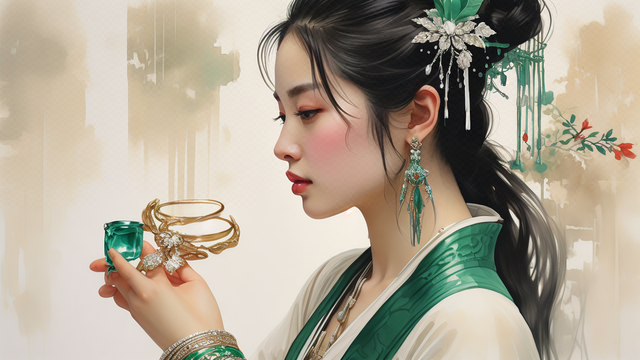
The Timeless Elegance of Jade Jewelry: A Guide to Understanding and Choosing
Introduction
Jade jewelry, often celebrated for its rich cultural significance and stunning beauty, has been a symbol of elegance and status for centuries. Revered in various cultures, particularly in East Asia, jade is not just a gemstone; it represents harmony, balance, and prosperity. In this article, we will explore the different types of jade, its cultural importance, and tips for selecting and caring for jade jewelry.
Understanding Jade: Types and Characteristics
Jade primarily comes in two varieties: jadeite and nephrite. Both types have distinct properties and beauty, making them popular in different styles of jewelry.
- Jadeite: The rarer of the two, jadeite is known for its vibrant colors, which can range from green to lavender, red, and even black. Its quality is often determined by its color saturation and translucence, with the most sought-after being "imperial jade," a rich emerald green.
- Nephrite: Generally more abundant and less expensive than jadeite, nephrite typically has a more muted green color. However, it is also valued for its durability and smooth texture, making it an excellent choice for crafting jewelry.
The Cultural Significance of Jade
Jade has been cherished for thousands of years, particularly in Chinese culture, where it symbolizes purity, wisdom, and protection. It is often engraved with auspicious symbols and used in various forms of art. In addition to jewelry, jade has been used in carvings and ornaments, believed to bring good luck and ward off evil spirits.
Cultural Uses and Symbolism:
- Chinese Traditions: In Chinese customs, jade is considered a protective stone, often gifted to children and loved ones to ensure safety and health.
- Māori Culture: In New Zealand, jade (or pounamu) holds profound significance for the Māori people, symbolizing connection to the ancestors and the earth.
Choosing the Right Jade Jewelry
When selecting jade jewelry, there are several factors to consider to ensure you choose a piece that resonates with you:
- Quality of Jade: Look for the vibrancy of color, transparency, and texture. High-quality jade should have a smooth surface and a rich color without visible inclusions.
- Style and Design: Jade jewelry comes in various styles, from classic bangles to intricate pendants. Choose a design that matches your personal style and complements your wardrobe.
- Origin and Authenticity: Be cautious with your purchase. Ensure you're buying from reputable sources. Genuine jade will often come with certificates of authenticity, particularly for high-end pieces.
- Personal Connection: Jade is often chosen based on personal affinity. Spend time selecting a piece that resonates with your energy and aesthetic preferences.
Caring for Jade Jewelry
To keep your jade jewelry looking beautiful for years to come, follow these care tips:
- Regular Cleaning: Clean jade with a soft, damp cloth to remove dirt and oils. Avoid using harsh chemicals or ultrasonic cleaners.
- Proper Storage: Store jade jewelry in a separate compartment in a soft pouch or lined box to prevent scratches and damage.
- Avoid Hard Impacts: Although jade is durable, it can still chip or crack if subjected to hard knocks. Take care when wearing or storing it.
Conclusion
Jade jewelry is more than just an accessory; it embodies artistry, culture, and history. Its unique beauty and significance make it a treasured addition to anyone’s collection. By understanding the different types of jade, their cultural importance, and how to choose and care for your jewelry, you can appreciate the elegance of jade in your life.
Whether worn for personal enjoyment or as a meaningful gift, jade jewelry serves as a reminder of nature's beauty and the rich traditions connected to this timeless gemstone.
AD
article by 52ctf is licensed under CC BY-NC-ND 4.0